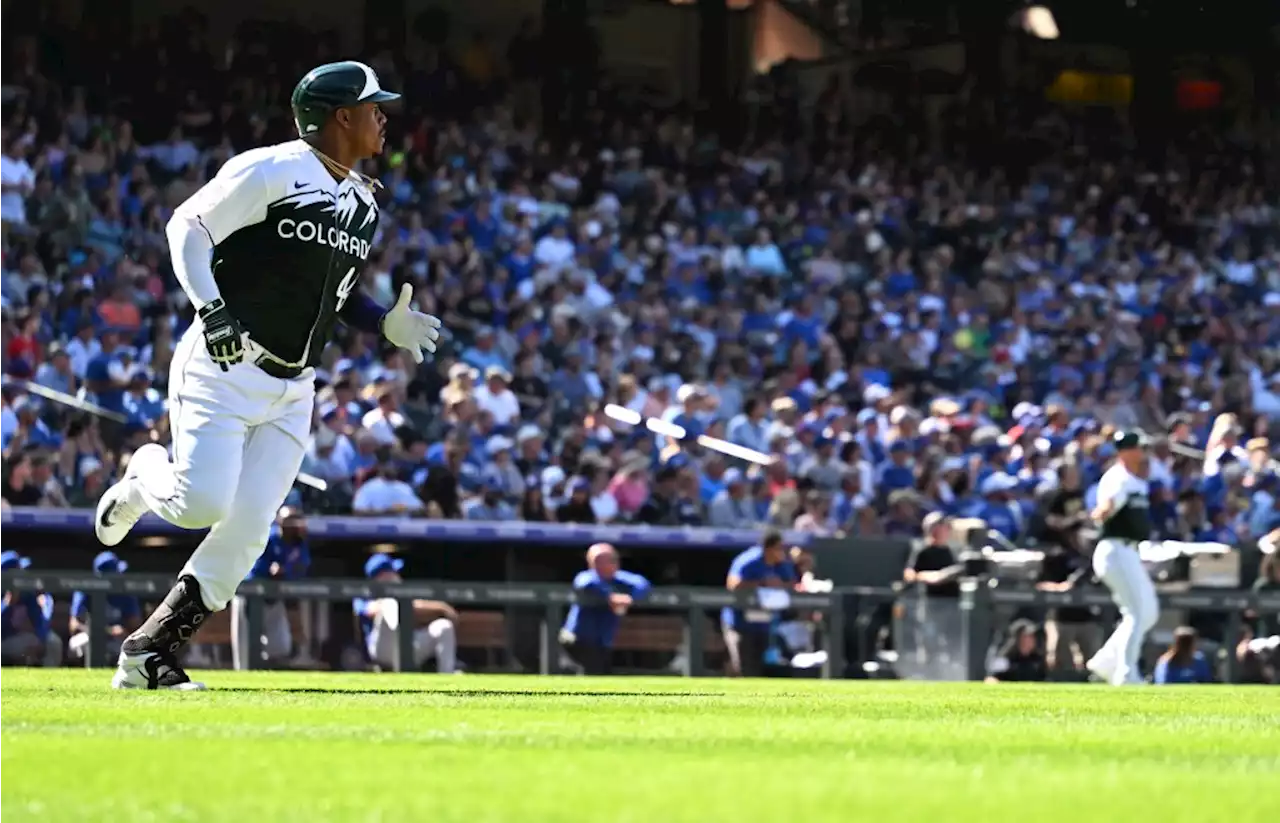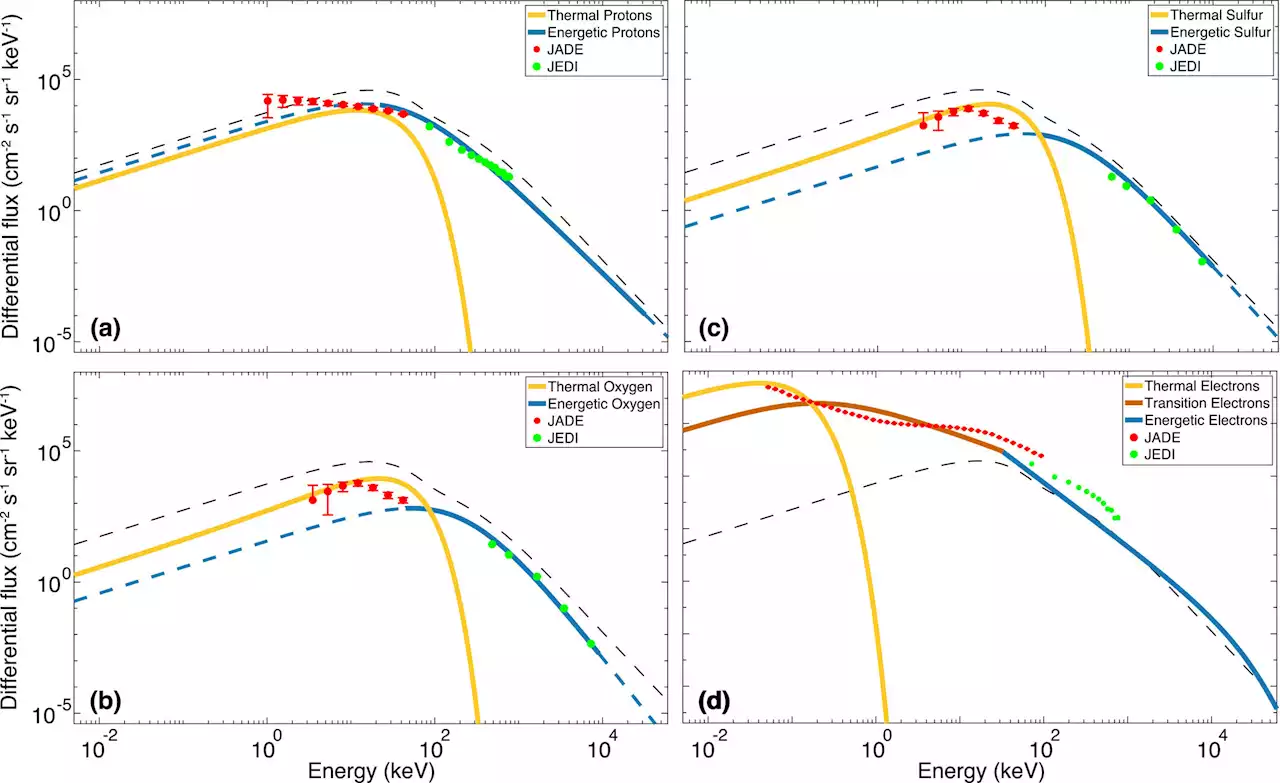A team of scientists affiliated with several institutions in the U.S. has tested a theory created to explain the amount of oxygen in the atmosphere of Callisto, one of Jupiter's moons, and has found that it falls short. In their paper published in Journal of Geophysical Research: Planets, the group describes how they tested the theory and other possible avenues of research.
Scientists simulate thermal, energetic components of Jovian magnetospheric plasma irradiating Callisto's atmosphere Differential number flux spectra for protons, oxygen ions, sulfur ions, and electrons near Callisto's orbit. Curves illustrate fits for the thermal and energetic plasma. Orange curves for electrons represent the transition from thermal to energetic regime.
Callisto is second in size to Ganymede, Jupiter's largest moon. It is also the most heavily cratered. Callisto has become the object of more scrutiny recently due to the unexplained large amount of oxygen in its atmosphere. Prior research has suggested that Callisto has a thick crust under which may lie an ocean, but its composition is still not clear—it might be crust with some ice, or mostly ice. It has also been known for some time that Callisto's atmosphere has a high percentage of oxygen. What has remained a mystery is how that oxygen got there, and why it persists.
Nigeria Latest News, Nigeria Headlines
Similar News:You can also read news stories similar to this one that we have collected from other news sources.
 Ada Limón's Poem for Europa, Jupiter's Smallest MoonU.S. Poet Laureate Ada Limón discusses her involvement in NASA's Europa Clipper mission and the inspiration behind her poem which will travel aboard the spacecraft.
Ada Limón's Poem for Europa, Jupiter's Smallest MoonU.S. Poet Laureate Ada Limón discusses her involvement in NASA's Europa Clipper mission and the inspiration behind her poem which will travel aboard the spacecraft.
Read more »
 Rockies Journal: Elehuris Montero emerges as late-season surpriseElehuris Montero is proving me wrong.
Rockies Journal: Elehuris Montero emerges as late-season surpriseElehuris Montero is proving me wrong.
Read more »
 Long-awaited 1 Journal Square project on track as neighborhood continues to reach for the sky-
Long-awaited 1 Journal Square project on track as neighborhood continues to reach for the sky-
Read more »
 Nuggets Journal: New NBA rule on resting multiple stars doesn’t affect Denver … unless Jamal Murray has eyes on All-NBA prizeFifteen NBA teams have two or more “stars” under the league’s new Player Participation Policy. The defending champions aren’t one of them.
Nuggets Journal: New NBA rule on resting multiple stars doesn’t affect Denver … unless Jamal Murray has eyes on All-NBA prizeFifteen NBA teams have two or more “stars” under the league’s new Player Participation Policy. The defending champions aren’t one of them.
Read more »
